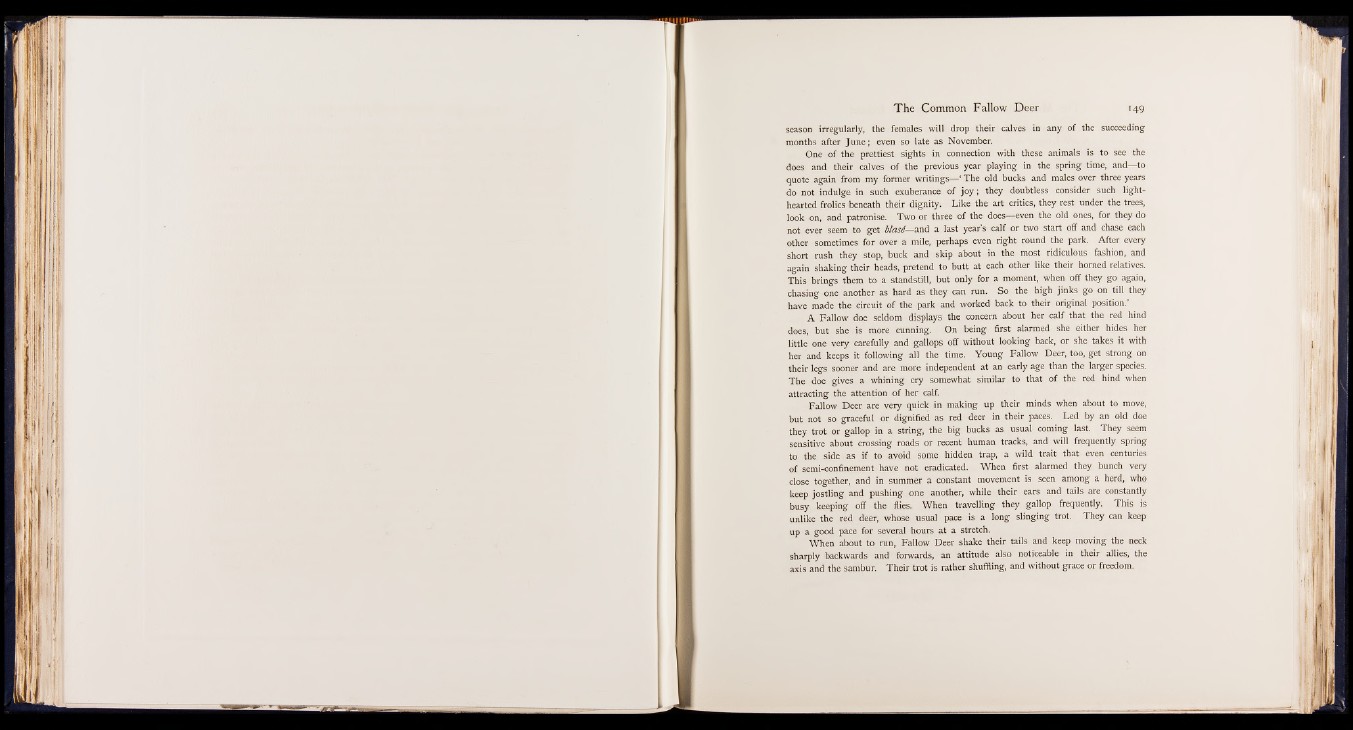
season irregularly, the females will drop their calves in any of the succeeding
months after June; even so late as November.
One of the prettiest sights in connection with these animals is to see the
does and their calves of the previous year playing in the spring time, and— to
quote again from my former writings— ' The old bucks and males over three years
do not indulge in such exuberance of jo y ; they doubtless consider such lighthearted
frolics beneath their dignity. Like the art critics, they rest under the. trees,
look on, and patronise. Two or three of the does— even the old ones, for they do
not ever seem to get blusd—and a last year’s calf or two start off and chase each
other sometimes for over a mile, perhaps even right round the park. After every
short rush they stop, buck and skip about in the most ridiculous fashion, and
again shaking their heads, pretend to butt at each other like their horned relatives.
This brings them to a standstill, but only for a moment, when off they go again,
chasing one another as hard as they can run. So the high jinks go on till they
have made the circuit of the park and worked back to their original position.’
A Fallow doe seldom displays the concern about her calf that the red hind
does, but she is more cunning. On being first alarmed she either hides her
little one very carefully and gallops off without looking back, or she takes it with
her and keeps it following all the time. Young Fallow Deer, too, get strong on
their legs sooner and are more independent at an early age than the larger species.
The doe gives a whining cry somewhat similar to that of the red hind when
attracting the attention of her calf.
Fallow Deer are very quick in making up their minds when about to move,
but not so graceful or dignified as red deer in their paces. Led by an old doe
they trot or gallop in a string, the big bucks as usual coming last. They seem
sensitive about crossing roads or recent human tracks, and will frequently spring
to the side as if to avoid some hidden trap, a wild trait that even centuries
of semi-confinement have not eradicated. When first alarmed they bunch very
close together, and in summer a constant movement is seen among a herd, who
keep jostling and pushing one another, while their ears and tails are constantly
busy keeping off the flies. When travelling they gallop frequently. This is
unlike the red deer, whose usual pace is a long slinging trot. They can keep
up a good pace for several hours at a stretch.
When about to run, Fallow Deer shake their tails and keep moving the neck
sharply backwards and forwards, an attitude also noticeable in their allies, the
axis and the sambur. Their trot is rather shuffling, and without grace or freedom.